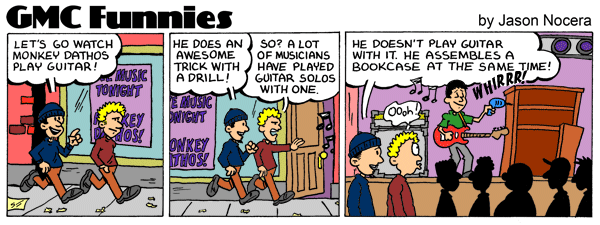What Are Perfect Intervals?
In this Theory lesson we’ll be looking at one of the most commonly used intervals in modern music, the Perfect Interval.
There are 3 different Perfect Intervals in music, the Perfect 4th, Perfect 5th and Perfect Unison/Octave.
Each of these intervals can be found in the major scale, and so if you know your major scale notes you can always find these intervals from any given root as they will be the intervals found in that scale.
For example, if you have a C major scale:
C D E F G A B C
And you want to find the Perfect Intervals, you simply look at the 1st, 4th, 5th and 8th notes of that scale.
C-F = Perfect 4th
C-G = Perfect 5th
C-C = Perfect Octave/Unison
For those of us that are still learning the notes of our major scales, there are formulas that you can memorize and use to figure out all of these intervals without knowing the notes of their corresponding major scales.
Here are those formulas to check out.
Perfect 4th Intervals
There are two ways that you can find Perfect 4th intervals, one on the guitar and one using whole-steps to build this interval.
On the guitar, if you have a starting note, say G, and you are on the 6th, 5th, 4th or 2nd string, you simply go one string higher, staying on the same fret, and you have a Perfect 4th interval, C in this case.
If you are on the 3rd string, you need to go 1 string up and 1 fret forward, since the 2nd string is tuned differently from the rest, to find a Perfect 4th interval.
To build a Perfect 4th from an interval standpoint, you start on your root note, G for example, and then you move up 2.5 whole-steps, G-A-B-C, to find your note, again C in this instance.
Here are a couple of examples of Perfect 4th intervals written out on different parts of the neck.

Test Your Theory Knowledge!
After you’ve learned how to build a Perfect 4th interval, go ahead and write a number of them out and post your work below. I will be happy to go over and check your work to make sure that you’re on the right track when it comes to identifying and writing this interval.
Perfect 5th Intervals
Similarly, there are two ways you can find a Perfect 5th interval above a note, one on the guitar and one off the guitar.
On the guitar, if you have a root note on the 6th, 5th, 4th or 2nd string, you simply move up 1 string and forward 2 frets and you have a Perfect 5th interval, creating the “Power Chord” shape that we all know and love.
For the 3rd-string root note, you go up 1 string and forward 3 frets to find a Perfect 5th, again due to the tuning of that string being different from the others.
Off the guitar, you can move up 3.5 whole steps from your root-note to find a Perfect 5th interval, such as moving from G to D, G-A-B-C#-D, to make a Perfect 5th above G.
Here are a couple of examples of Perfect 5th intervals written out on different parts of the neck.

Test Your Theory Knowledge!
After you’ve learned how to build a Perfect 5th interval, go ahead and write a number of them out and post your work below. I will be happy to go over and check your work to make sure that you’re on the right track when it comes to identifying and writing this interval.
Unison and Octave Intervals
The last Perfect interval has two sides to it’s construction.
The Perfect Unison is built by playing the same note in the same range, so to G’s that sound the exact same, but that may or may not be played on the same string as you can see in the example below.
A Perfect Octave interval is the same note, such as E and E, but that are separated by the musical alphabet on the staff, so they sound in different ranges of the instrument such as in the example below.
Here are a couple of examples of Unison and Octave intervals written out on different parts of the neck.

Test Your Theory Knowledge!
After you’ve learned how to build Unison and Octave intervals, go ahead and write a number of them out and post your work below. I will be happy to go over and check your work to make sure that you’re on the right track when it comes to identifying and writing this interval.
You are at GuitarMasterClass.net
Don't miss today's
free lick. Plus all our lessons are packed with
free content!
This post has been edited by The Professor: Mar 18 2013, 11:48 AM



 The Professor What Are Perfect Intervals? Mar 16 2013, 10:20 AM
The Professor What Are Perfect Intervals? Mar 16 2013, 10:20 AM
 leonard478 I think its something to do with the fact that if ... Mar 16 2013, 09:56 PM
leonard478 I think its something to do with the fact that if ... Mar 16 2013, 09:56 PM
 The Professor QUOTE (MonkeyDAthos @ Mar 16 2013, 04:29 ... Mar 17 2013, 01:12 AM
The Professor QUOTE (MonkeyDAthos @ Mar 16 2013, 04:29 ... Mar 17 2013, 01:12 AM
 Kristofer Dahl QUOTE (The Professor @ Mar 17 2013, 01:12... Mar 18 2013, 10:49 AM
Kristofer Dahl QUOTE (The Professor @ Mar 17 2013, 01:12... Mar 18 2013, 10:49 AM
 The Professor QUOTE (Kristofer Dahl @ Mar 18 2013, 09:4... Mar 18 2013, 11:30 AM
The Professor QUOTE (Kristofer Dahl @ Mar 18 2013, 09:4... Mar 18 2013, 11:30 AM


















